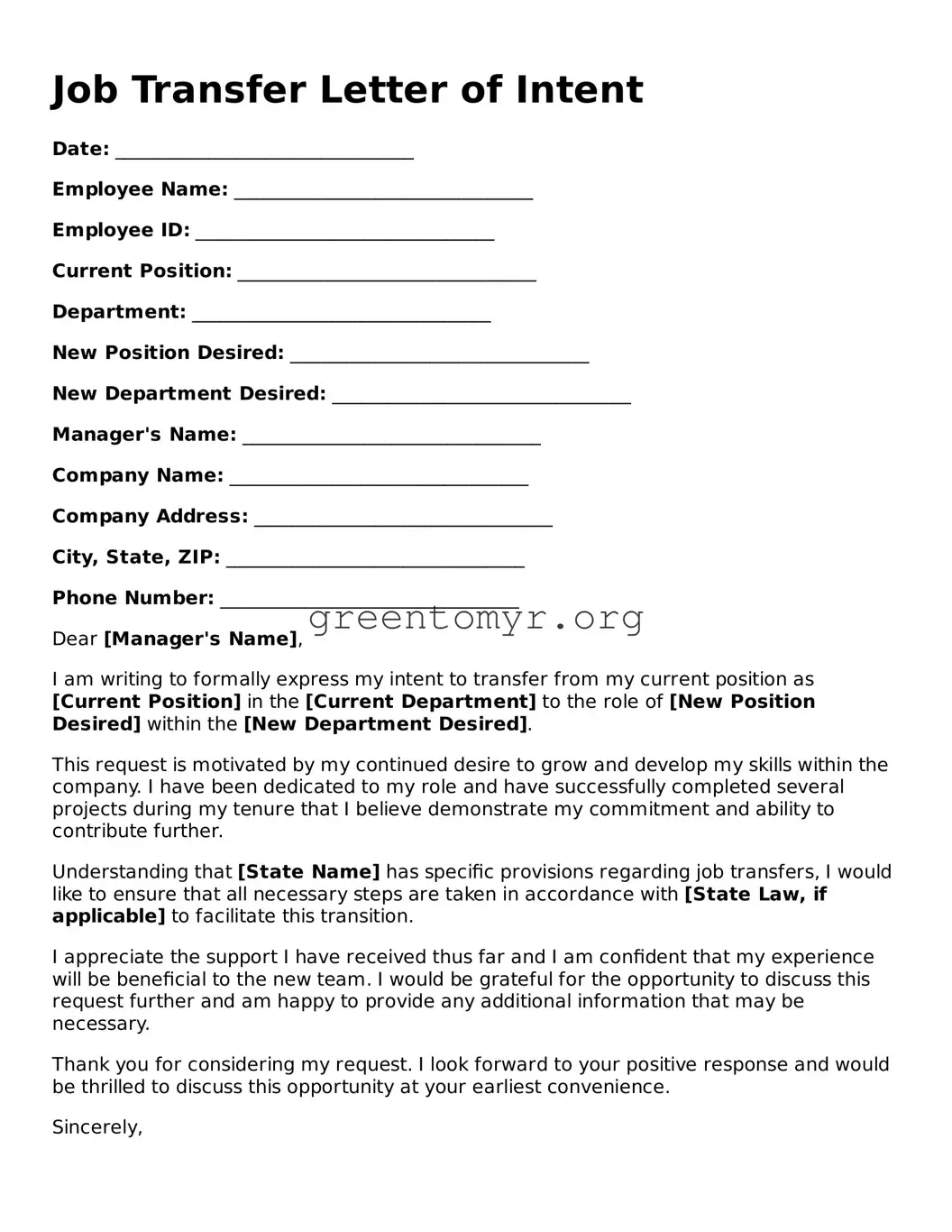Job Transfer Letter of Intent
Date: ________________________________
Employee Name: ________________________________
Employee ID: ________________________________
Current Position: ________________________________
Department: ________________________________
New Position Desired: ________________________________
New Department Desired: ________________________________
Manager's Name: ________________________________
Company Name: ________________________________
Company Address: ________________________________
City, State, ZIP: ________________________________
Phone Number: ________________________________
Dear [Manager's Name],
I am writing to formally express my intent to transfer from my current position as [Current Position] in the [Current Department] to the role of [New Position Desired] within the [New Department Desired].
This request is motivated by my continued desire to grow and develop my skills within the company. I have been dedicated to my role and have successfully completed several projects during my tenure that I believe demonstrate my commitment and ability to contribute further.
Understanding that [State Name] has specific provisions regarding job transfers, I would like to ensure that all necessary steps are taken in accordance with [State Law, if applicable] to facilitate this transition.
I appreciate the support I have received thus far and I am confident that my experience will be beneficial to the new team. I would be grateful for the opportunity to discuss this request further and am happy to provide any additional information that may be necessary.
Thank you for considering my request. I look forward to your positive response and would be thrilled to discuss this opportunity at your earliest convenience.
Sincerely,
[Employee Name]
[Phone Number]
[Email Address]
